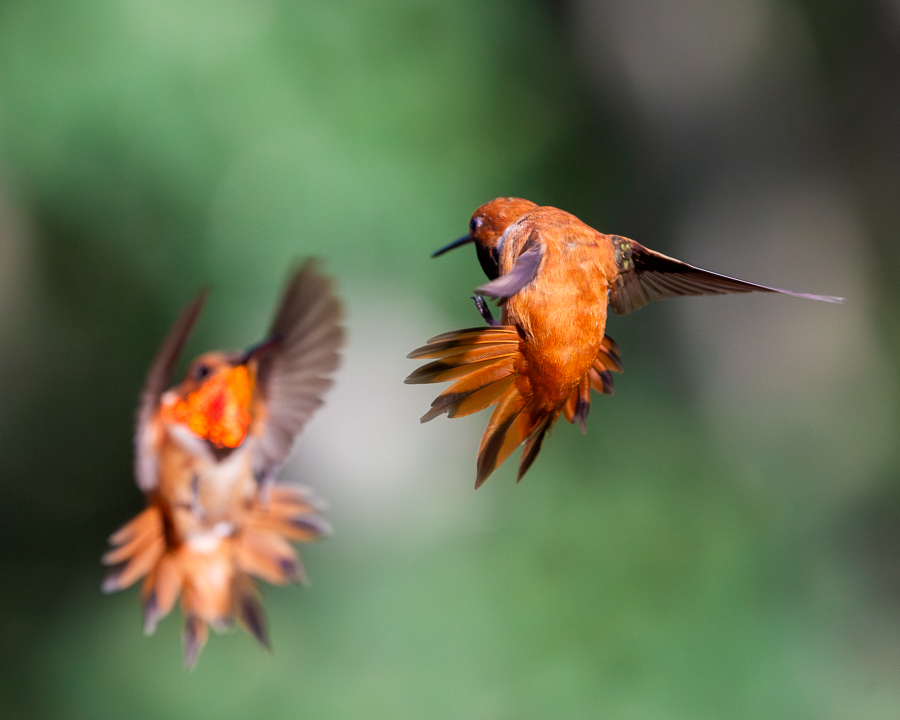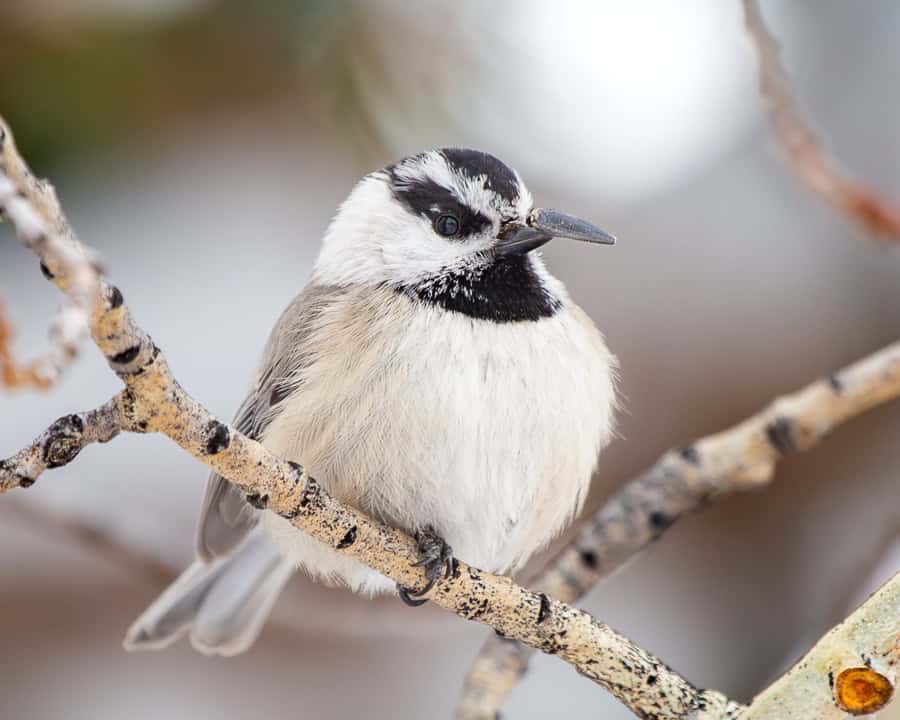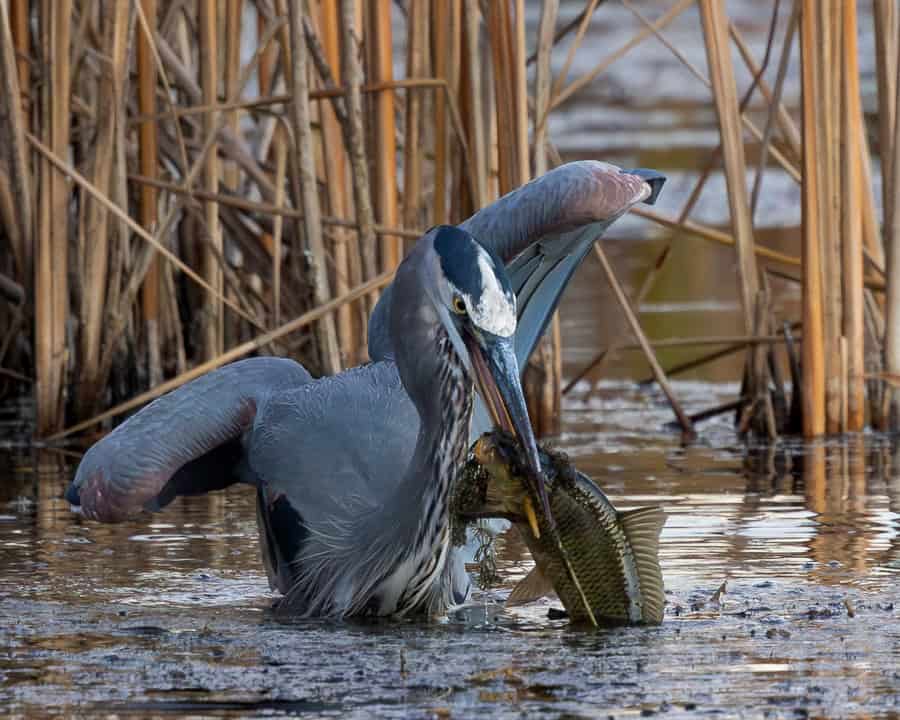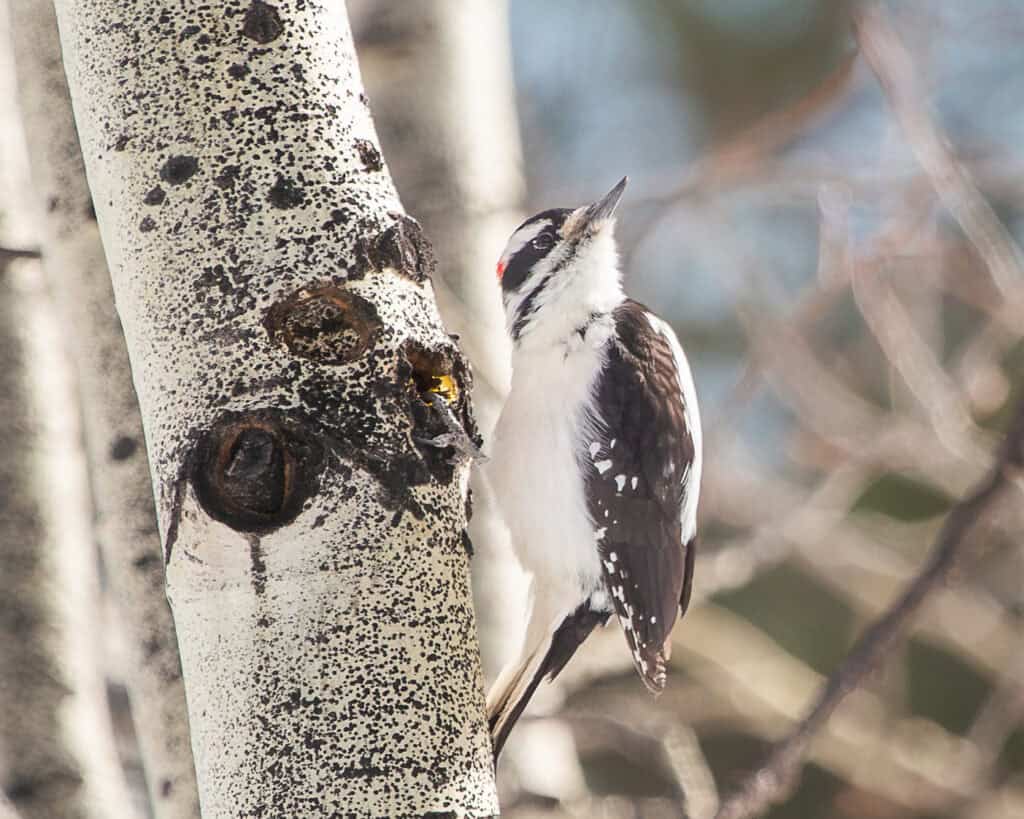Peak summer is here, and the air is alight with wild energy! While most of the migratory animals arrive in the late spring and early summer, there are a few more just now showing up or passing through, and their arrivals signify some serious competition. A few weeks ago, we began to see our first arrivals of the notorious Rufous hummingbirds, and by now the air wars are in full swing.

I was recently asked if these fiery spirits were the “ones with social issues” and if they were extra feisty because of the sugary feeder syrup vs natural flower nectar. I am not a scientist in any way, so I can’t provide a definitive answer regarding sugar vs nectar and its physiological effects on behavior. My theory from observation is that ultimately no, the specific food type isn’t the root of the aggression as much as food sources in general are quite contentious in the natural world, no matter the source.
A major factor in the natural food vs feeder syrup question regarding behavior and dominance around a food source is the reality of scarcity. When it comes to flowers, nectar doesn’t come in an on-demand endless supply. Flowers become diminished by all manner of creatures enjoying the treat, and it takes time for a flower to “resupply” itself. Feeders on the other hand have a seemingly endless inventory as we humans make and refill. The simple reality is that the birds don’t seem to understand this and guard the flower-like food-source as though it will run out at any given minute.
Socially speaking, all hummingbird species are highly territorial. Broad-Tails are by far our most common here in the Peak-to-Peak region. They begin to arrive in April and tend to stay until sometime in September, well establishing themselves and their given food-based territories. It bears noting that most hummingbirds return to the very same food source every year, so this establishment isn’t typically a new thing every year for them. By July, they are quite settled into a routine and boundaries with other Broad-Tails, but then the whole game gets tossed on its head when the Rufous arrive.
Going back to general food scarcity as a reason for aggression, we must remember that we’re talking about creatures who are migrating great distances for their continued survival, and food sources are key to the success of that journey. While broad-tail migration is nothing to sniff at, typically traveling from winter homes in Mexico and Guatemala, the Rufous are covering far greater ground.
These birds winter as far south as northern Brazil and begin their northerly trek in February or early March. The route takes them up the Pacific coast to their breeding grounds in British Columbia and southern Alaska. When we see them in July, they are already making their way south to the wintering grounds. Some of those that we see are just passing through, while others stay a little while, usually into mid-August or so.
This extremely long distance requires a LOT of food to make the journey, so whether they are just passing through or settling in for a while, let’s just say they are a bit hangry. For those that stay a while, they seem to settle into a “routine” with the other species, after a fashion, whether by bullying their way in, or coming to a sort of amiable agreement to share space. While it is common for a single rufous pair to barge in and take over a feeder, the other birds do still feed but utilize the area’s flowers more than the feeder, which due to its “natural” perches provide an “on-location” spot from which to sit upon and guard ferociously.
One factor that mitigates the bullying by Rufous is sheer numbers. During the summers I enjoyed “hosting” upwards of 500 hummingbirds a day, by the time the Rufous arrived they never stood a chance at dominating the territory. That said, attracting those kinds of numbers can take years of frequent hummingbirds taking up summer residency. Another simpler way to minimize aggression if one is using feeders, is to add additional food sources. Spread feeders far enough apart so that you are providing multiple territories from which a bully might try to dominate. Ideally, they shouldn’t be close enough to even be seen by a bully, so that it comes down to a simple “out-of-sight out-of-mind” trickery.
At the end of the day, air wars will continue regardless of one specific species. As seen in the example image of two Rufous squaring off, even if no other species is around, they will still fight among themselves over a food source. Outside of the solutions addressed, it’s best to just sit back and enjoy watching nature take its course, as these little ones are still quite the entertaining gems to make up part of our summer pleasures.
Originally published in The Mountain-Ear






